The Sahara Desert covers about 25% of the African continent and is the largest hot desert in the world, with an area of 3,600,000 square miles (9,200,000 km). This immense ecosystem is made up of sand dunes, some of which are 500’ tall, stone plateaus, sand seas, gravel plains, dry valleys, and sand flats. Plant life includes olive, palm, mastic, acacia, and cypress trees, as well as grasses, and other desert hardy plants. The average temperature of the Sahara is about 86 °F (30 °C) but summer temperatures can reach 117 °F (47 °C). On average, the Sahara only receives about 3” (76 millimeters) of rainfall per year. The Sahara is an environment of extremes, and yet life flourishes here. About 70 species of mammal, 90 species of bird, and 100 species of reptile live in the Sahara as well as numerous invertebrates and even a few amphibian species. Today we’re looking at the Safari Ltd. Sahara Desert TOOB, new for 2022. It is a delightful mix of animals both familiar and unfamiliar, carefully selected to represent this vast habitat. We’ll first look at each of the nine figures the TOOB has to offer and then assess the TOOB as a whole.
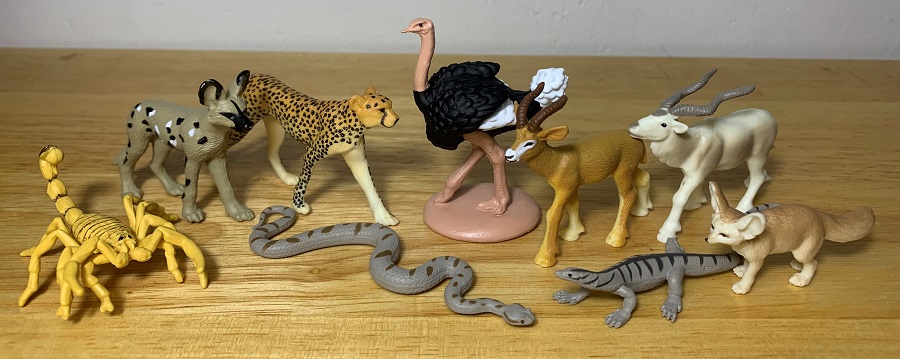
Deathstalker Scorpion (Leiurus quinquestriatus): The deathstalker ranges from North Africa through the Middle East and into Western India. It is one of the most dangerous species of scorpion in the world, but its sting is rarely fatal for a healthy adult. The figure measures about 2” (5 cm) from head to tail which makes it roughly life sized.
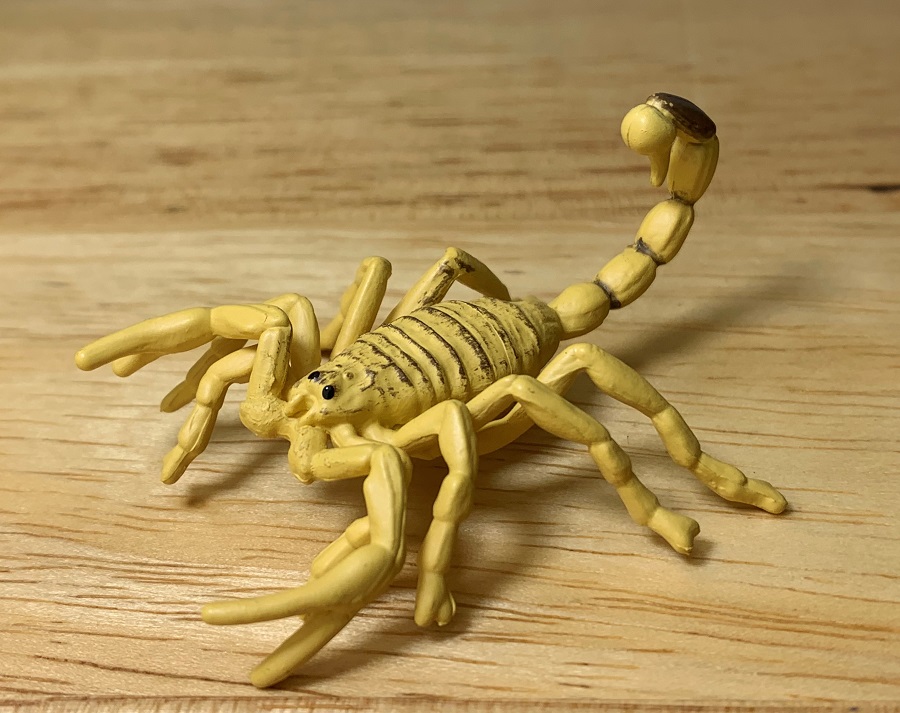
This is a wonderfully sculpted little figure with great attention to detail. I especially like the ridged texture along the back and the sculpted joints and segments in the legs and tail. The figure is yellow with brown stripes along the back, brown painted between the tail segments, and a brown segment just before the stinger. The eyes are shiny black. Only a couple other deathstalker figures exist so this is definitely one of the highlights of this TOOB for me.
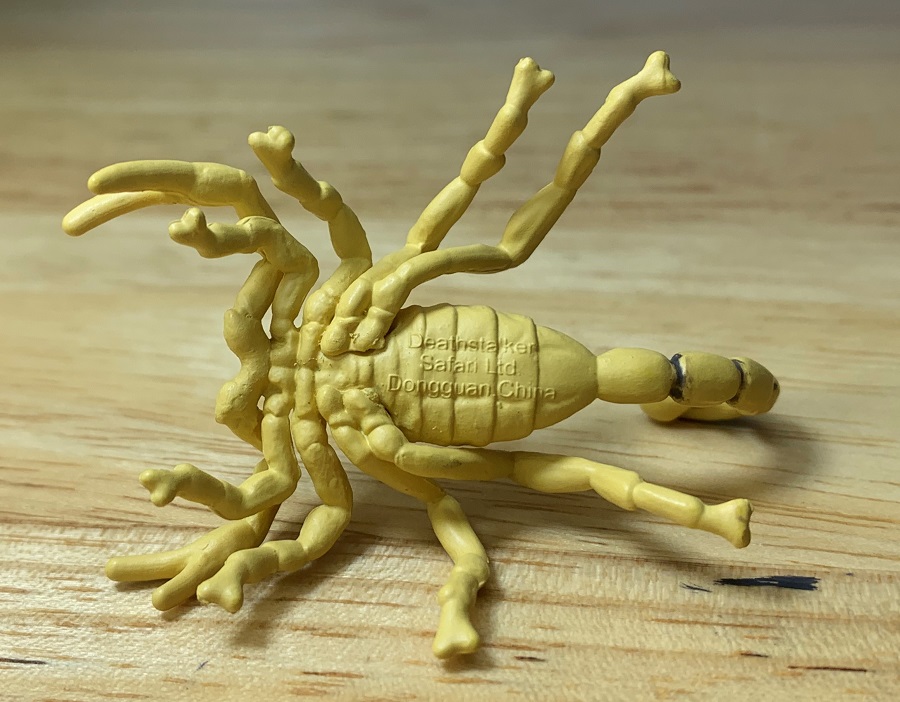
Desert Monitor (Varanus griseus): This species of monitor lizard can be found in North Africa and Central and South Asia. They’re carnivorous and take a wide range of vertebrate and invertebrate prey, as well as eggs. They average about 39” (1 meter) which puts this 3” (7.6 cm) figure at about 1/13 in scale.

The figure is presented striding forward with the tail is a gentle S shape and the head looking rightward. The figure itself in minuscule with a head about the size of a pencil tip but it packs in a lot of fine detail. The entire figure is given a scaly texture, individual claws can be seen on each digit, and a cloaca is even present on the underside. The figure is gray with brown stripes and bands. The eyes are shiny black. This is the only figure marketed as this species that exists, so it represents another highlight for me in this TOOB.

Horned Viper (Cerastes cerastes): This is a venomous species of viper that occurs in both North Africa and the Arabian Peninsula where they are one of the most familiar species of venomous snake. Their venom may cause numerous side effects including swelling, hemorrhaging, and necrosis but is rarely fatal. Horned vipers often move about by sidewinding, and they’ll rub their keeled scales together to produce a rasping sound when threatened. The horned viper reaches a length of 12–24” (30–60 cm). This figure measures 3” but would probably be closer to 4” if stretched out. I’m going to give it a scale of 1/6 for a maximum sized individual.

I’m always excited for new, small scale snake figures and this one is no exception, so it’s another highlight in the TOOB for me. It is also the only figure of this species that exists. The figure is sculpted with fine scalation above and wide belly scales below. The head has the wide, triangular shape of a viper as well as its namesake pair of horns. The figure is gray with brown markings and the eyes are painted brown too. The color of this species can vary and typically matches the habitat where a distinct population is found.
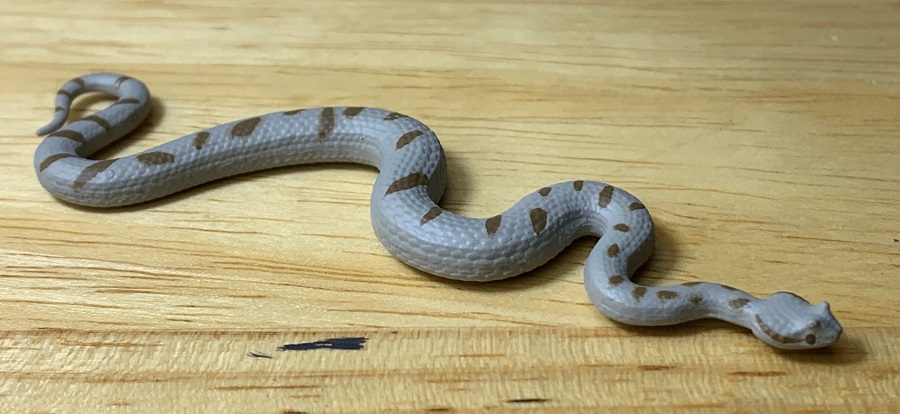
Ostrich (Struthio camelus): Here’s one of the more familiar animals in the set and one that needs no real introduction. The ostrich is the largest species of bird in the world and a popular choice among toy manufacturers. Ostriches live in most of Africa, including a large swath of the Sahara but not its most northernly portions. This figure stands about 2.25” (5.7 cm) but determining scale is difficult due to its bent legs and neck. Actual ostriches can measure up to 9’ (2.7 meters) so I’m going to roughly scale this figure at 1/48.
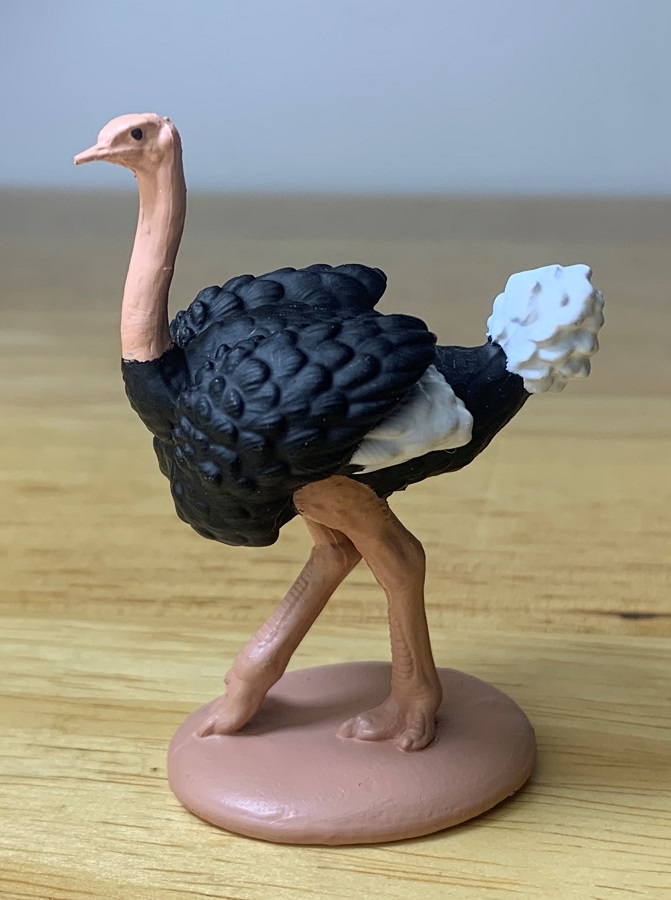
This is another exceptionally well-done figure with nicely defined feather detail, scales running down the legs, and a tiny pencil tip sized head that doesn’t sacrifice detail. It stands on a base, so the legs are decently proportioned, and it won’t fall over. This ostrich represents a male with its black plumage. The primary feathers and tail are white, the head, neck, and legs pink, and the eyes shiny black. The base is the same color as the legs.
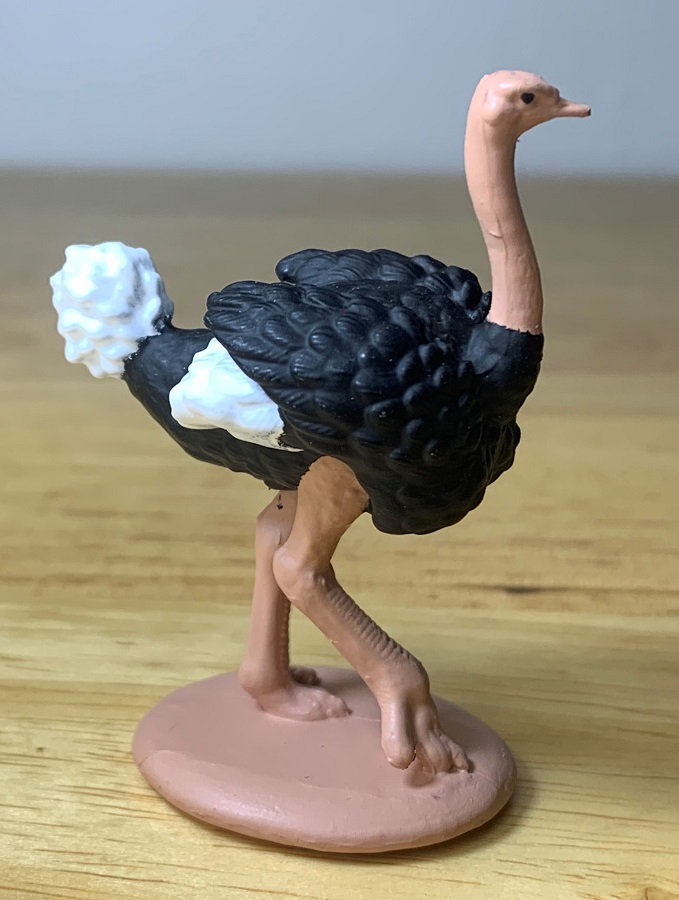
Cheetah (Acinonyx jubatus): Another familiar species but an essential addition to this TOOB. Although we all get excited for the more unique figures these TOOBS include it is important to have a balance of both familiar and unique species. The cheetah lives in scattered populations throughout Africa and Central Iran. Several sub-species exist, and it is the Northwest African cheetah (A. j. hecki) that can be found in the Sahara. Cheetahs have a head-to-body length of 3-4’ (0.9- 1.2 meters) and this cheetah has a head-to-body length of about 2” (5 cm), putting it at about 1/24 in scale.
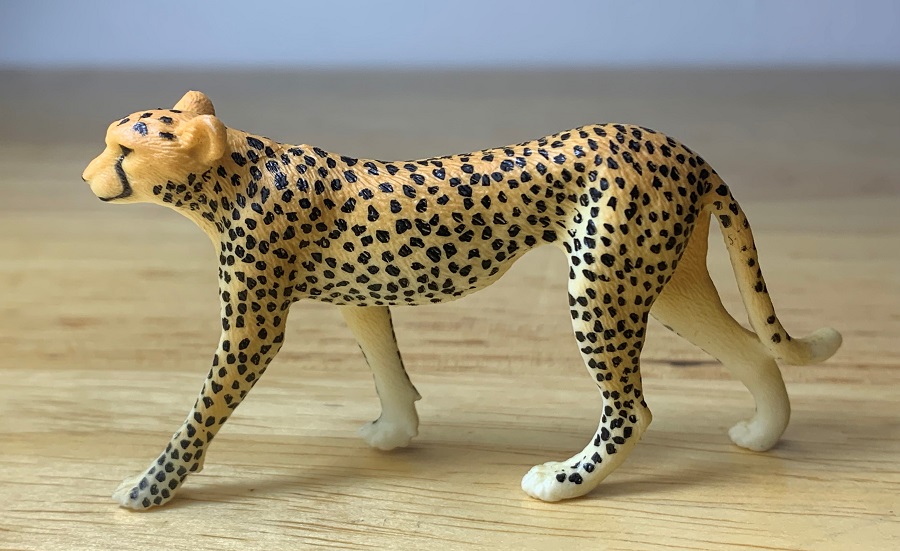
This cheetah is appropriately lean, deep chested, and long legged. It is presented striding forward and is detailed with a fine coat of fur and heavy black spotting. The body is pale orange and the eyes shiny black. This is another beautifully executed little toy and although the cheetah is a common animal in the toy market this cat is a welcome addition to the TOOB.
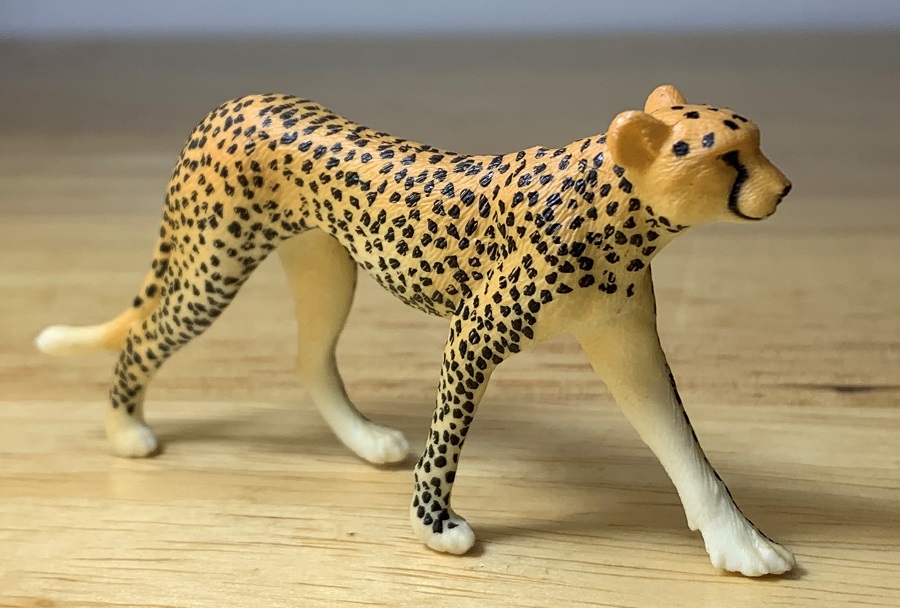
Fennec Fox (Vulpes zerda): Perhaps the most iconic animal of the Sahara because it is a desert specialist only found in North Africa. The fennec fox is the world’s smallest species of canid and characterized by its large ears used to dissipate heat and detect prey. Fennec foxes have a head-to-body length of about 14” (35 cm) and this TOOB figure has a head-to-body length of just 1” (2.52 cm). This puts it at 1/14 in scale.
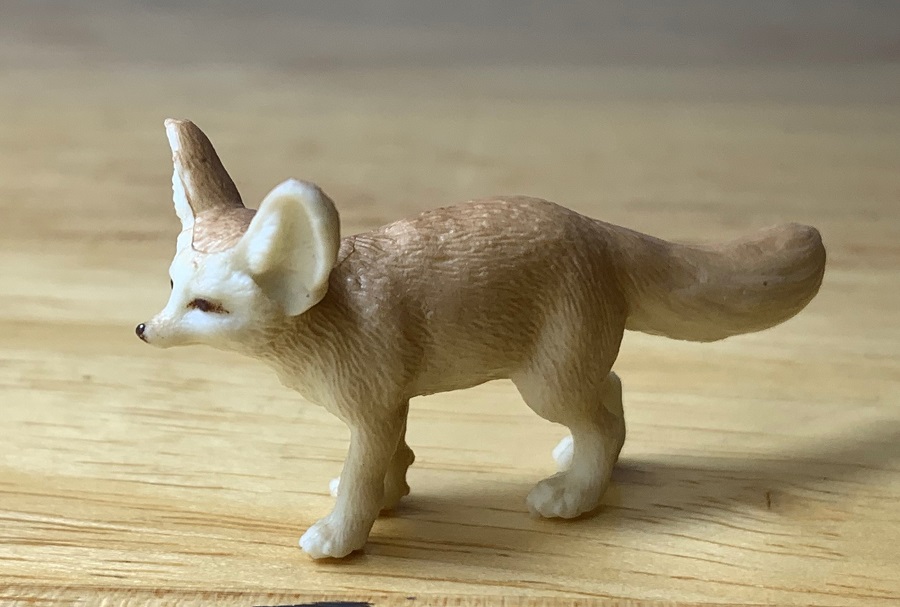
This fennec fox is both the smallest and cutest animal in the TOOB and because of that I’m absolutely in love with it. It is painted a pale sandy brown color with a darker brown nose and eyes. The toy is detailed with a short coat of fur and longer hair on its fluffy tail. Once again, I am blown away by how well executed these little TOOB figures are, this one even has tiny toe pads on its feet.

African Wild Dog (Lycaon pictus): The African wild dog lives in small, fragmented populations throughout Africa but has only a very small presence in the Sahara itself. It is the largest wild canid in Africa. They’re diurnal hunters that live in complex social groups and they hunt a range of prey from rodents to medium sized antelopes. The African wild dog has a shoulder height up to 30” (75 cm) and can have a head-to-body length of up to 44” (112 cm). Using shoulder height on this one I get a scale of 1/24. The figure itself measures 2” (5 cm).
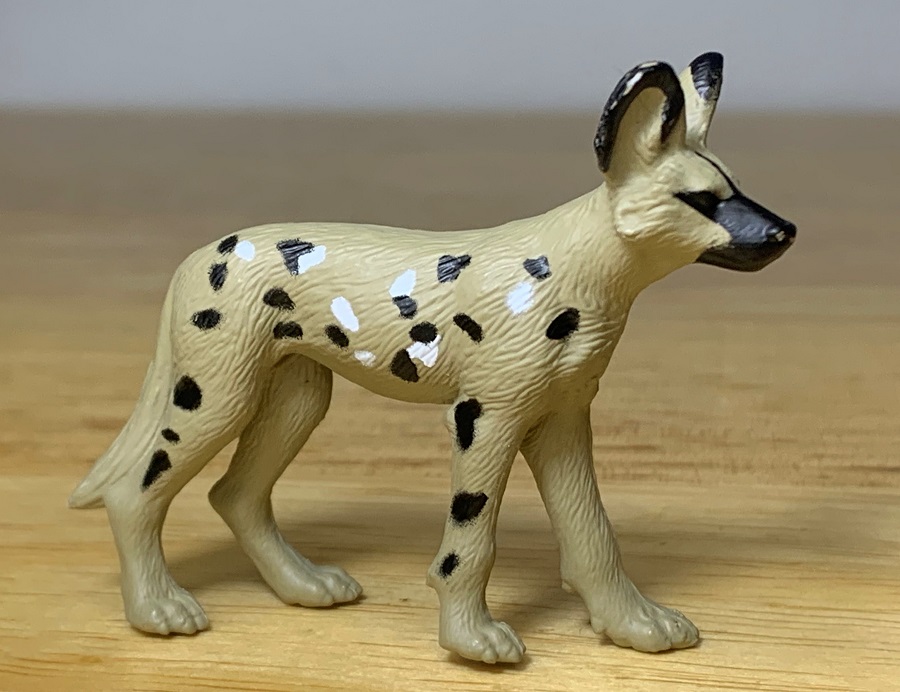
This figure is presented as tall and lean with large, prominent ears, all characteristic of the species. The detail work is nicely done and consists of sculpted fur across the body, longer fur around the face and on the tail, and paw pads. The figure is tan in color with black and white spots, a black face, and black edged ears. I personally would have preferred a darker base color and more mottling of the colors, but this is still a fine little representative of the African wild dog.
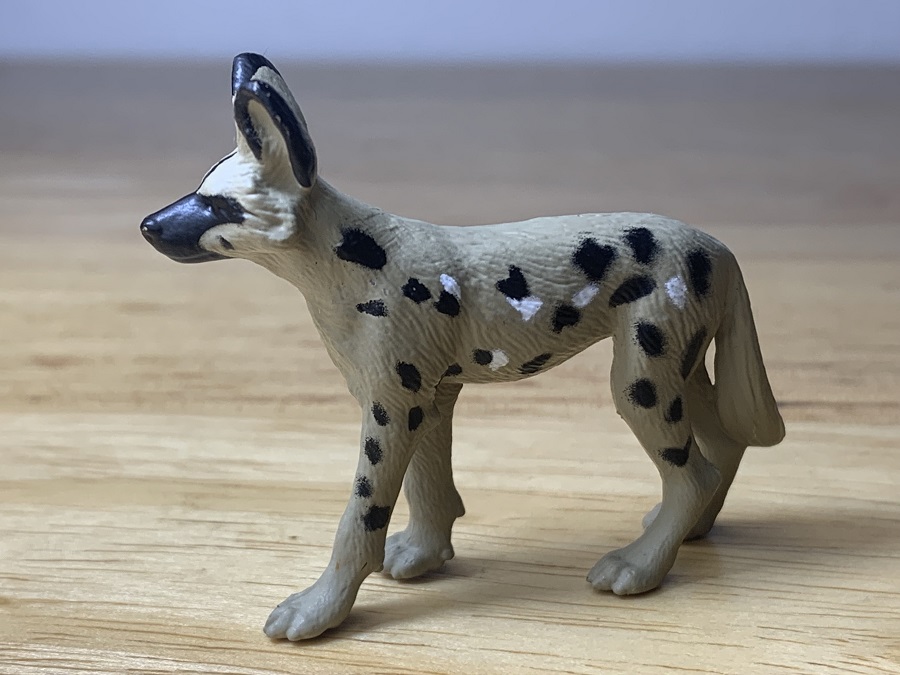
Dorcas Gazelle (Gazella dorcas): The next couple of figures are really special in that they represent ungulates so far neglected by toy companies. In the case of the Dorcas gazelle, this is the only one. The Dorcas gazelle is a small species that ranges across the entire Sahara. It has a shoulder height of about 2’ (60 cm) and a head-to-body length of 3.5’ (110 cm). This figure measures 2” (5 cm) in length and stands 1.25” at the shoulder. Using shoulder height, I get a scale of 1/19 for this figure.
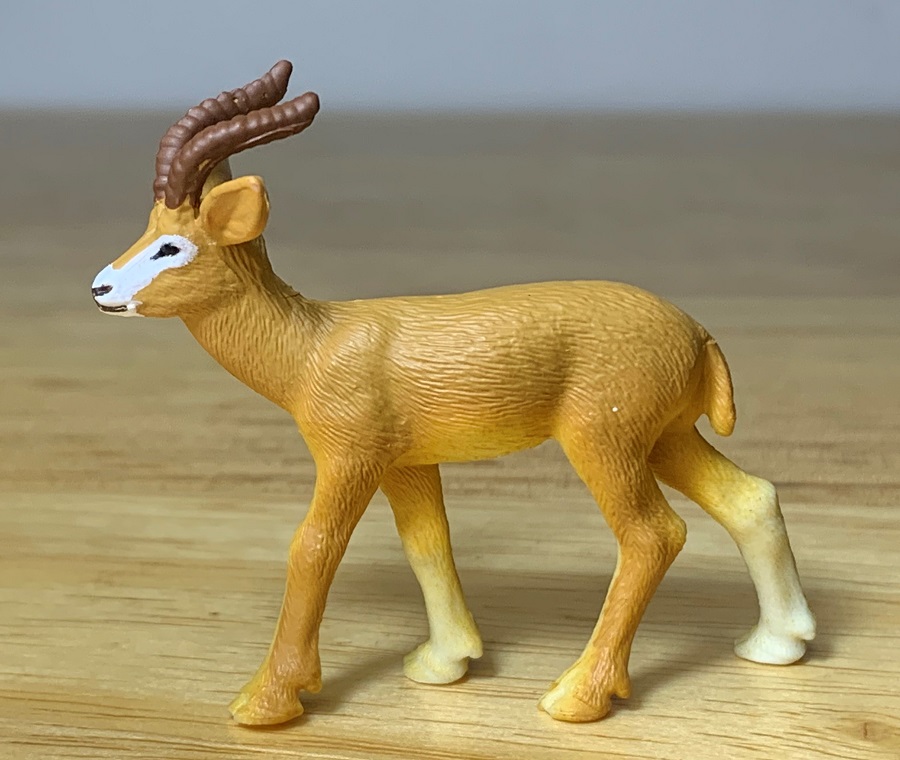
The figure is presented alert and striding forward. It has the long ears and curved horns characteristic of the species and is nicely detailed with a coat of fine hair and distinct digits on the hooves. The legs are a bit thick, but this is no doubt to aid in stability and prevent breakage. The figure has a pale brown body with a white muzzle that extends over the eyes. The nose, mouth, and eyes are painted black, and the horns are brown. The underside should ideally be white and boarded by a dark brown stripe along the flanks, but we won’t get too particular about it, this is a wonderful addition to the TOOB.

Addax (Addax nasomaculatus): Lastly, the addax antelope, another animal rare in figure form with only 1 other representative that I’m aware of. The addax is a critically endangered species with about 500 individuals left in the wild. But there are 600 in captivity around the world and thousands more in private collections and ranches. The addax stands up to 45” (115 cm) tall at the shoulder while this figure stands about 1” (2.54 cm) at the shoulder and measures 2.5” (6.35 cm) long. That puts the figure at 1/45 in scale, using shoulder height.
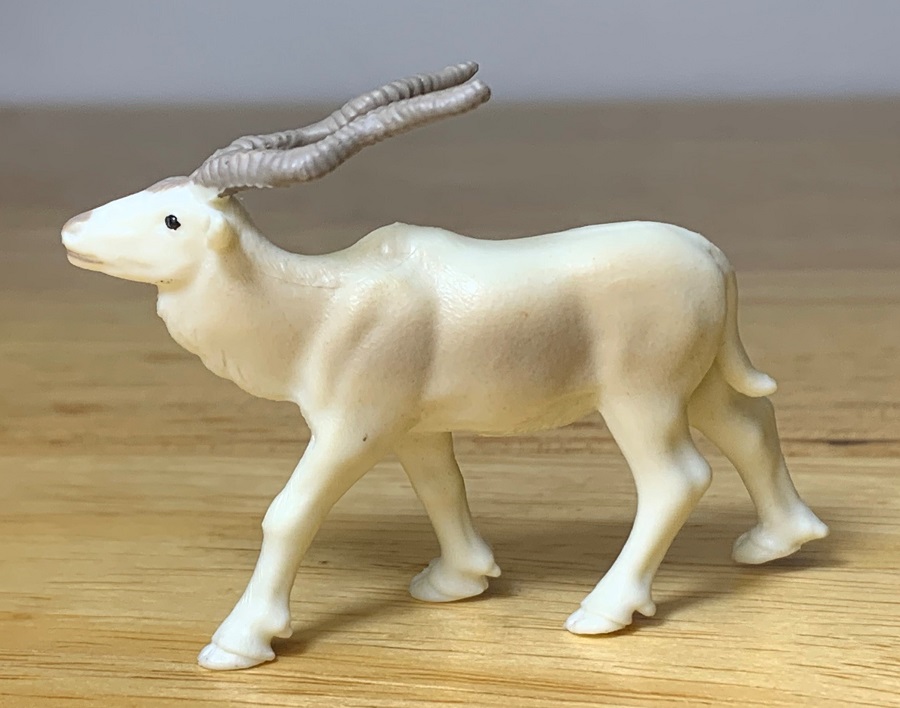
This figure is presented striding forward with the head lifted high and tilted back. There is no hair detail here and the figure is entirely smooth, but the actual addax has a very fine coat of hair anyway. The gray horns are spiral shaped and nicely textured. There’s a fleshy dewlap along the neck and the hooves are nicely detailed with distinct digits. The addax is also known as the white antelope and this figure is, indeed, mostly white. There is a bit of a pale brown wash on the flanks and a gray spot over the nose and on the forehead. The eyes are shiny black. This figure is another highlight in the TOOB for me.
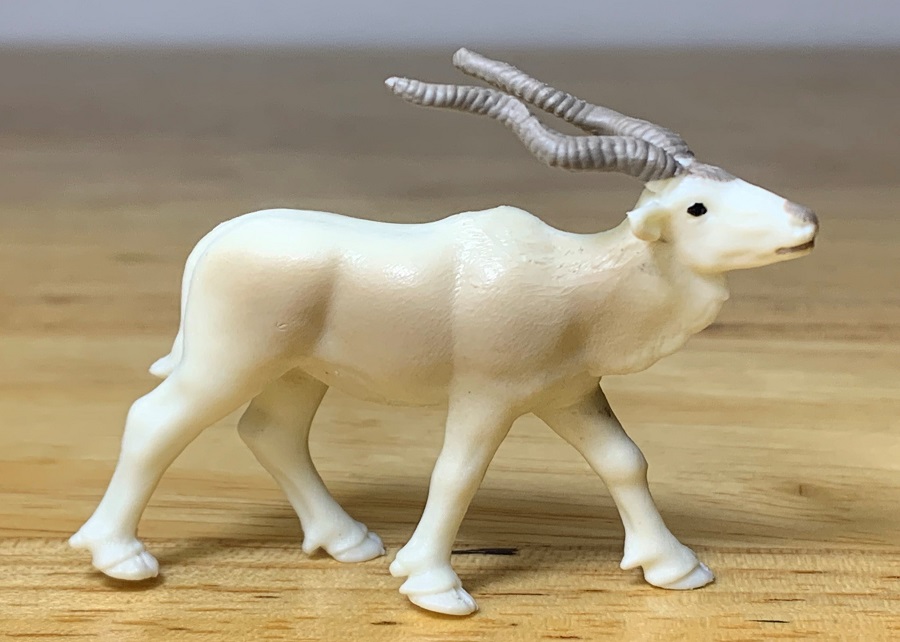
Overall, this TOOB is a wonderful surprise from Safari that highlights a diverse assortment of animals both common and obscure, in nature and in pop culture. There is something here for everyone, from reptile and invertebrate lovers to ungulate collectors. Safari has come a long way with these TOOBs and I am astonished by how much the level of detail and realism in these figures has progressed over the years. I also love that Safari is making these TOOBs dedicated to geographic locations and cannot wait to see what they come up with next. The Safari Sahara Desert TOOB is new for 2022 and will be available for purchase shortly.
Disclaimer: links to Ebay and Amazon on the AnimalToyBlog are affiliate links, so we make a small commission if you use them. Thanks for supporting us!




I wish there was a way to give this review six stars!!! I really want the scorpion and the two reptiles; I’ll probably just get the whole TOOB and use the bycatch for trades, etc.
I knew you would get excited about those, especially the scorpion.
If you’re trading the bycatch, please save the gazelle, addax, and fennec for me. I am waiting for a set of Cadbury Yowies, and you might like some of the duplicates.
actually I need the Cadbury Yowie Graeffe’s sea cucumber; mine is incomplete (missing the black protuberances). I’ll gladly trade any or all three of those to get my sea cucumber right LOL
Sorry, but I only have one of that sea cucumber. May I interest you in any of these species instead? I got duplicates of all of these.
Argus monitor
Choiseul pigeon
Cuban macaw
Falklands warrah
Little Swan Island hutia
Scaly-tailed possum
Tasmanian pademelon
I just noticed you mention cacti being present in the Sahara Desert. If so, they’d have to have been introduced, as cacti are all native to the New World. There are plants (mainly euphorbs) that look like cacti in Africa (this is an example of co-evolution), but there are no native cacti in the Sahara 🙂
These are all gorgeous animals, although the Painted Dog and Addax could both really use some more paint. Still all excellent animals and great to see some underrepresented species, alongside an excellent ostrich and a great cheetah.
Do you know when it will be released?